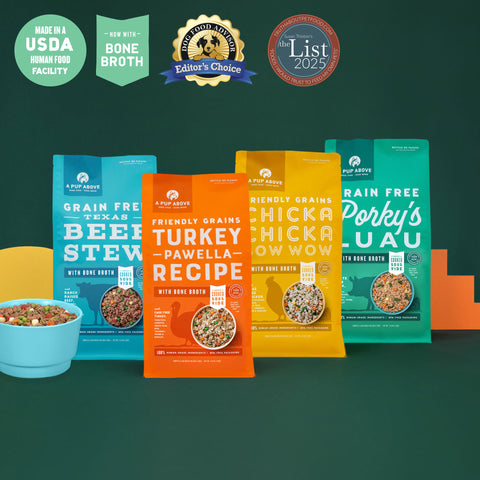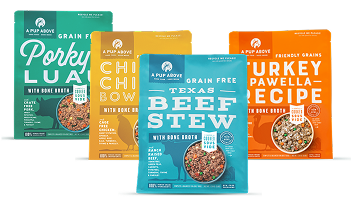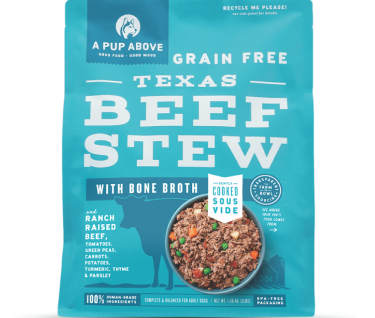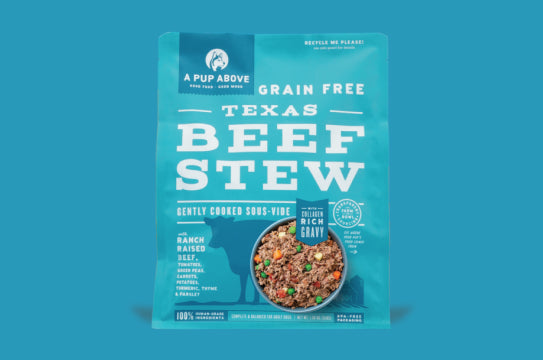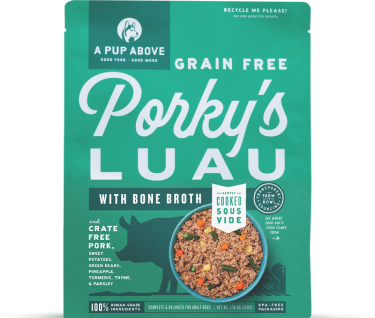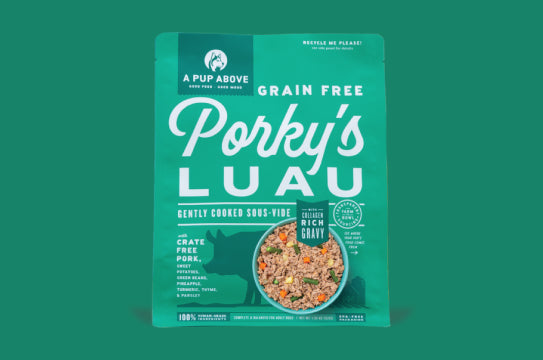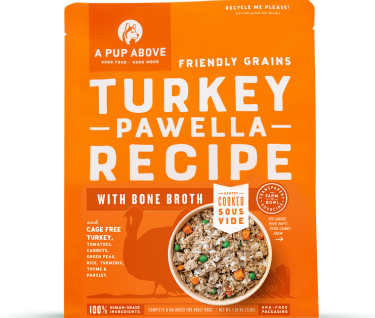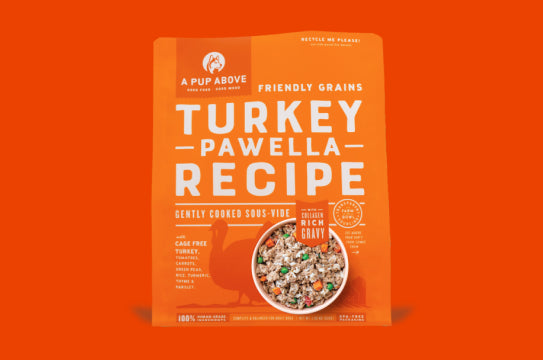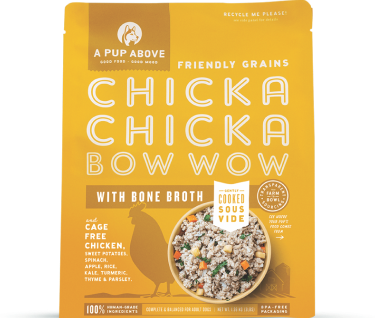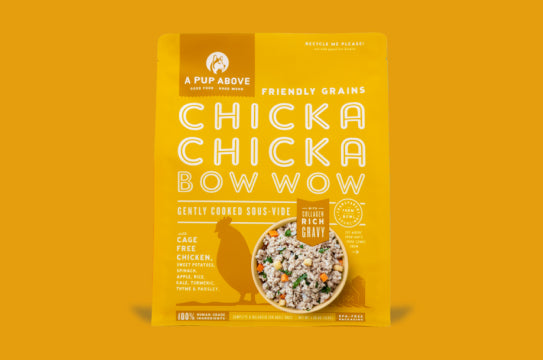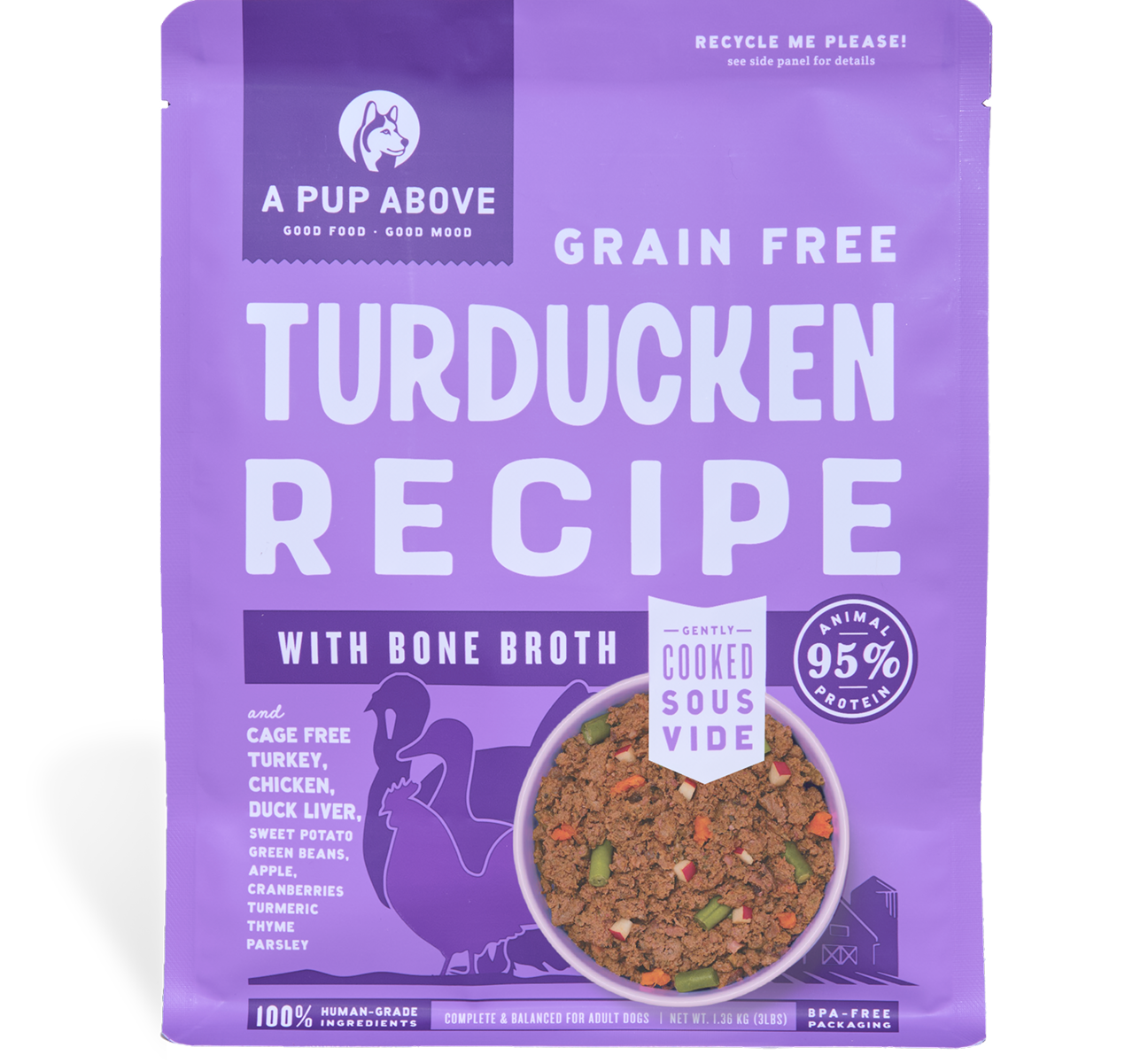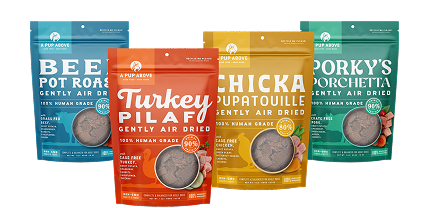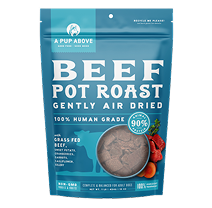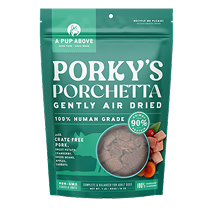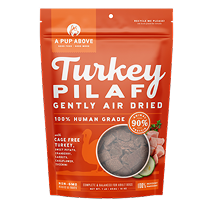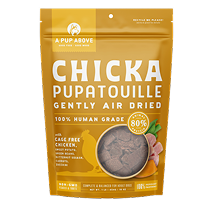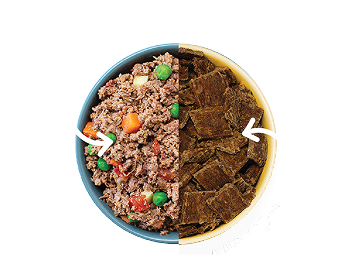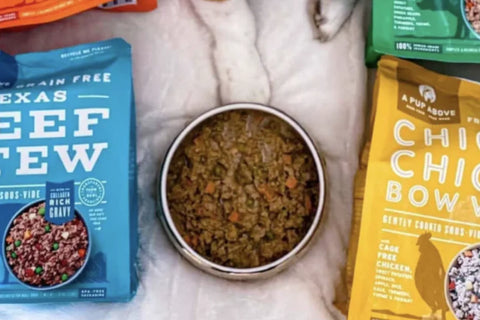
Canned Dog Food vs. Fresh Dog Food
Table of Contents
- What Is Canned Dog Food?
- What Is Fresh Dog Food?
- What’s Really the Difference in Ingredient Quality?
- Is the Nutritional Value of Canned and Fresh Dog Food Different?
- Do Safety and Storage Come Into Play?
- What Do Dogs Prefer?
- What Is the Price vs. Value Comparison Between the Two?
- Which One Is Right for Your Dog?
- FAQs
- Wrapping Up
Takeaways:
- Canned dog food typically comes in aluminum cans or BPA-free boxes and contains about 70-80% moisture, which can help keep dogs hydrated and may be beneficial for pups who don’t drink enough water on their own. However, the cooking process can compromise nutrient integrity, and many options rely on mystery meats or vague labeling.
- Fresh dog food is whole, minimally processed food made with high-quality, human-grade ingredients. Unlike canned or kibble-based options, fresh food is cooked gently, often sous-vide or lightly steamed, to preserve nutrients while ensuring food safety.
- For dogs with sensitive stomachs, picky appetites, or pet parents who want to prioritize whole-food nutrition, fresh meals are a great option. Fresh food makes it easy to serve gently cooked, human-grade recipes that are nourishing and delicious.
Today’s pet parents are more ingredient-savvy than ever, and that awareness extends to what goes in their dog’s bowl. With a growing emphasis on health, longevity, and food transparency, the debate between canned dog food and fresh dog food is heating up.
Both options offer specific benefits, but they’re not created equal. At A Pup Above, we understand that from ingredient quality to nutrition and overall wellness, how you feed your pup can have a major impact on their vitality and your peace of mind.
In this guide, we’ll break down the differences between canned and fresh dog food, so you can make an informed decision that keeps tails wagging.
What Is Canned Dog Food?
Canned dog food, also known as wet food, is a long-standing staple in the pet food aisle. It typically comes in aluminum cans or BPA-free containers and contains about 70-80% moisture. This high water content can help keep dogs hydrated and may be especially beneficial for pups who don’t drink enough water on their own.
Most canned formulas are made through high-heat processing to ensure shelf stability, with a combination of meat (or meat by-products), grains, and synthetic nutrients. It’s convenient, relatively inexpensive, and easy to store which makes it a go-to option for busy pet parents.
However, this convenience often comes with trade-offs. The intense cooking process can compromise nutrient integrity, and many canned options rely on mystery meats or vague labeling like “animal derivatives” or “meat meal.” That’s why reading ingredient labels carefully (and understanding what they really mean) is so important.
What Is Fresh Dog Food?
Fresh dog food is exactly what it sounds like: whole, minimally processed meals made with high-quality, human-grade ingredients. Unlike canned or kibble-based options, fresh food is cooked gently, often sous-vide or lightly steamed, to preserve nutrients while ensuring food safety.
For example, we offer fully cooked, ready-to-serve meals made with ingredients you’d recognize from your own kitchen: real meats, non-GMO veggies, and functional add-ins like bone broth and turmeric. No artificial preservatives, no sketchy by-products, just honest, wholesome food.
Fresh food isn’t just about what's not in it. It’s also about digestibility, palatability, and supporting long-term health. Thanks to pre-portioned packs and freezer-friendly packaging, fresh food is now more accessible and convenient than ever before.
What’s Really the Difference in Ingredient Quality?
When it comes to ingredient quality, the gap between canned and fresh dog food becomes much more noticeable. Canned dog food can vary widely in quality.
Some brands use real meat, but many rely on meat by-products, unnamed animal proteins, and fillers like wheat gluten or cornmeal. These ingredients are often selected for cost efficiency rather than nutritional value. Add in artificial flavors or thickening agents like carrageenan, and you’ve got a highly processed product that’s far removed from a dog’s natural diet.
Fresh dog food, particularly human-grade options, puts transparency front and center. Labels clearly list real, whole-food ingredients such as USDA meats, non-GMO vegetables, and bone broth. You’ll recognize every item, and probably be tempted to taste it yourself (though we’ll leave that to your pup!).
This difference in sourcing and transparency matters. High-quality ingredients contribute directly to better digestion, stronger immunity, shinier coats, and overall vitality. After all, just like in human nutrition, you get out what you put in, and your dog deserves the best.
Is the Nutritional Value of Canned and Fresh Dog Food Different?
Canned dog food provides the essential proteins, fats, and carbohydrates your pup needs, but how much of that nutrition is actually absorbed?
Due to high-heat processing, many canned options lose naturally occurring nutrients and rely on synthetic vitamins and minerals to meet AAFCO standards. While these additions help meet baseline requirements, they may not be as bioavailable (or easily absorbed) as nutrients from whole foods.
Fresh dog food is prepared differently, often through gentle cooking methods that preserve more natural vitamins and amino acids. This leads to higher digestibility and better nutrient absorption. Many pet parents notice improved stool quality, increased energy levels, and reduced allergies after switching to fresh meals.
Fresh food’s higher moisture content and real-food ingredients are also easier on the stomach, making it a great choice for dogs with sensitive digestion or dietary sensitivities. Since many recipes are formulated by veterinary nutritionists, you’re getting a complete and balanced meal without relying on synthetic shortcuts.
Do Safety and Storage Come Into Play?
Both canned and fresh dog foods go through safety protocols, but how they’re stored and how long they last differ quite a bit.
Canned dog food is shelf-stable and can sit unopened for months or even years. Once opened, however, it must be refrigerated and used within three to five days to avoid spoilage. Some cans may also contain trace levels of BPA if not specifically labeled as BPA-free.
Fresh dog food, on the other hand, requires refrigeration or freezing from the start. While that means a shorter shelf life than canned food, it also reflects its minimal processing and real-food composition. At A Pup Above, we package meals in vacuum-sealed, freezer-friendly pouches, maintaining freshness without chemical preservatives.
The trade-off? You’ll need a bit of fridge or freezer space, but in return, you’re getting food that’s been cooked for safety and frozen for peak quality. And when you think of it like storing leftovers for a loved one, it’s a small effort that delivers big rewards.
What Do Dogs Prefer?
While dogs can’t give food reviews, their reactions speak volumes. Many pet parents find their pups are far more excited at mealtime when served fresh food. The aroma, texture, and real ingredients in human-grade fresh meals tend to be more appealing than the gelatinous consistency of canned food.
Canned food can be tasty for some dogs, especially picky eaters, but it often contains artificial flavors to enhance appeal. Fresh dog food relies on naturally savory ingredients like gently cooked meats and bone broth, which dogs instinctively love. For pups that have grown bored with their bowl, a switch to fresh can reignite interest and improve mealtime satisfaction.
What Is the Price vs. Value Comparison Between the Two?
On the surface, canned dog food appears to be more budget-friendly. A case of canned meals can be relatively inexpensive, especially from big-box or grocery brands. However, these savings can come at the expense of ingredient quality, digestibility, and long-term health benefits.
Fresh dog food, particularly human-grade options, comes with a higher price tag but also greater nutritional density, transparency, and tailored benefits. When considering fewer vet visits, reduced allergy flare-ups, better weight management, and overall wellness, fresh food often delivers better value over time.
A Pup Above even offers bulk discounts and delivery plans, helping bridge the affordability gap. For many pet parents, the trade-off is clear: investing in premium nutrition today supports a longer, healthier life for your dog tomorrow.
Which One Is Right for Your Dog?
Choosing between canned and fresh dog food depends on your pup’s needs, but quality should always lead the way. If convenience and shelf stability are top priorities, canned food may fit the bill; just be sure to read labels carefully and choose reputable brands.
For dogs with sensitive stomachs, picky appetites, or pet parents who want to prioritize whole-food nutrition, fresh meals are a standout option. Fresh food makes it easy to serve gently cooked, human-grade recipes that are as nourishing as they are delicious.
Ultimately, your dog’s energy, digestion, coat, and joy at mealtime are the best indicators of whether you’ve made the right choice.
FAQs
Is canned food better than kibble?
The high moisture in canned food changes the calorie density, which means your dog can enjoy a larger portion per meal to provide the same number of calories as an equivalent weight of kibble. And many dogs prefer the taste of canned and fresh food over kibble.
How many times a day should a dog eat?
After eight to 10 hours, an empty stomach begins to send signals to the brain that stimulate a hunger response. For this reason, at least two meals per day are best for your dog.
Is it okay to make your own dog food at home?
While it may seem like the best option, there are several reasons not to attempt this route. It is very hard to properly balance the vitamins and minerals your pup needs in every meal. Also, the shelf stability of homemade food is not nearly as good as store-bought, balanced fresh meals for dogs.
Wrapping Up
When it comes to your pup’s health, happiness, and taste buds, fresh dog food stands out. While canned options may offer convenience, they often fall short in ingredient quality, nutrition, and long-term value.
Choosing a fresh, human-grade option means serving real food made with care, and your dog will notice the difference.
Sources:
A review: nutrition and process attributes of corn in pet foods | NIH
Understanding Pet Food | AAFCO
Top Stories

Why Do Dogs Lick Their Paws?

Why Do Dogs Whimper & Make Noises in Their Sleep?

Healthy Vet-Approved Homemade Dog Food Recipes

How To Cook Sweet Potatoes for Dogs
